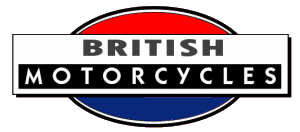


The Onaway was produced from 1905 to 1908 in St. Alban's Road, Watford, Hertfordshire.
The first machine was introduced at the late-1905 Stanley show. It caused interest in as much as it differed from the rest in its frame construction. This was solely of straight tubes for strength and lightness, with the engine carried in a cradle between the down and saddle tubes. The twin top-tubes ran directly from the headstock top to the rear axle so that the large seat was mounted well above it on coil springs, but still gave a low riding height. Large sprung foot-boards gave the rider further comfort.
The engine was a 5hp Kelecom V-twin, but a single was also available. Drive was by belt from an Osborne free-engine pulley, either direct or with four-speed gear. It had two petrol tanks and braced forks.
Despite its comfort, the lines of the machine failed to attract buyers, so the make was short lived.
A Novel Frame.
A motor bicycle which makes its first appearance before the public is the Onaway, which differs completely from any other machine exhibited last week. Every tube of the frame is perfectly straight, and the frame itself is necessarily strong. The engine, which can be either a double or single cylinder, is carried in a cradle. There are no pedals, but large footboards are provided, and as these project considerably on either side of the machine, the latter can be leant over without falling on its side. Either Osborne's free engine pulley or the free engine pulley and four-speed gear may be fitted.
The machine is not supplied with a saddle, but has a comfortably sprung seat of large size. This brings the rider so near the ground that he can stand over the machine without difficulty. The handle-bar control is well carried out, since thumb slides are fitted inside the handle-bar itself. There are two petrol tanks, communicating with one another by means of pipes. Both footboards are sprung, and the rear pulley brake is operated by means of the heel. A rim brake is also fitted to the front wheel.
Sources: Graces Guide; The Motor Cycle.